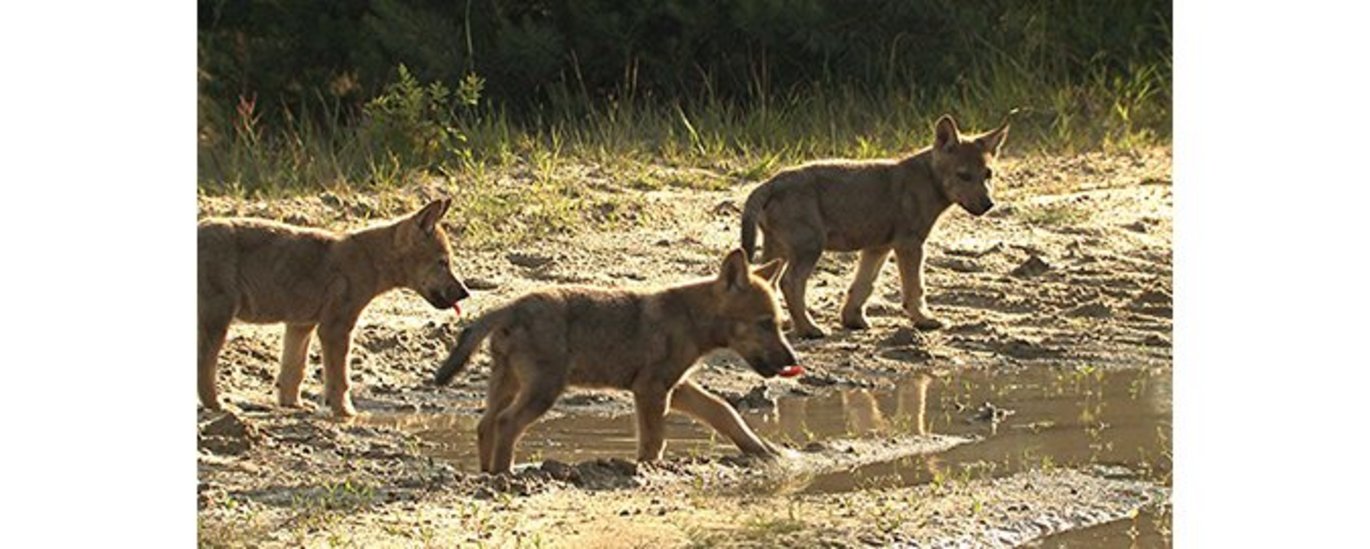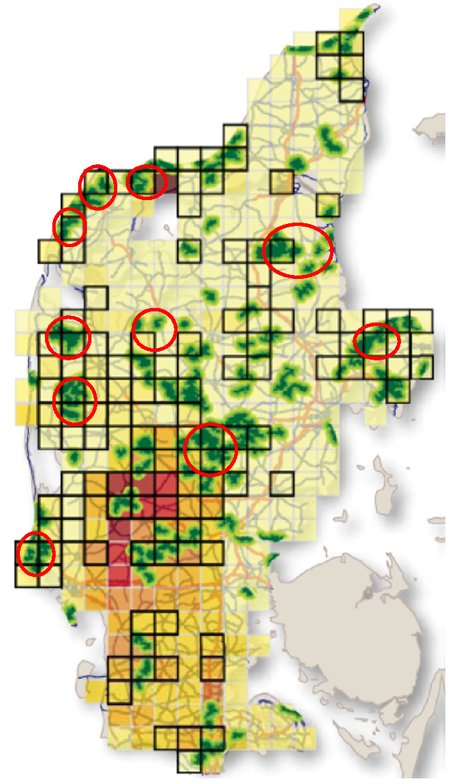Breeding wolwes in Jutland probable within 10 years
Already within the coming decade Denmark may have a breeding population of wolves that have wandered from Germany up through Jutland. The Jutland peninsula has suitable habitats to support ten family groups of wolves with an average number of eight members.

With the addition of a number of stray wolves, this means that the total population of Danish wolves could include up to 100 individuals. This is the estimate made by researchers from DCE – Danish Centre for Environment and Energy, Aarhus University – in a note to the Danish Nature Agency.
Wolves are not likely to disperse from Jutland to other parts of the country. The Little Belt will act as a barrier to dispersal for the wolves having immigrated to Jutland, and the potential for dispersal of wolves to Zealand from the Swedish population, for instance over an Øresund covered by ice or via the Øresund Bridge, is judged to be small.
Senior researcher Aksel Bo Madsen, the author of the note together with senior researcher Liselotte Wesley Andersen and senior researcher Peter Sunde, says:
“The wolf is a highly mobile animal that can easily and without difficulty wander a couple of hundred kilometers within a few days. Therefore, we may expect more stray wolves to appear in Jutland in the years to come. If we transfer the dispersal pattern in Germany to Danish conditions we can expect wolves to breed here in ten years at the latest.”
He and his colleagues substantiate their prediction by reasoning that straying male and female wolves sooner or later will meet in areas providing food and favourable living conditions.
“As the first breeding episode naturally will depend on the congruence of a number of accidental circumstances we cannot with any higher precision predict the exact time of the first wolf birth in recent time in Denmark,” says Aksel Bo Madsen.
Potential wolf habitats
Extensive investigations conducted in Germany show that wolves predominantly hunt and eat adult roe deer and young red deer. The number of both deer species is still increasing in Denmark. Researchers expect that “Danish” wolves will also have roe deer and red deer on the menu and have therefore studied the abundance of red deer in Jutland relative to physical dispersal barriers for the wolves such as larger sized towns, roads and railways and considering the nature of the areas in Jutland where wolves – based on the habitat investigations – can be expected to settle.
“The key wolf habitats in south-eastern Germany are intensively impacted by culture. This shows that wolves do not necessarily require large undisturbed areas to settle,” says Aksel Bo Madsen and continues: “German studies also show that connected moor and forest areas are attractive to wolves, and in Denmark the same areas are attractive to red deer. Based on a map showing large connected forest and moor areas we may qualitatively identify habitats favourable to wolves in Denmark.”
Thus, the DCE researchers have pinpointed ten areas in Jutland as the potentially most favourable breeding areas for wolves. These are
- Kallesmærsk Hede/Oksby/Vejers/Bordrup/Ål/Vrøgum Klitplantager
- Ulfborg/Stråsø Plantage and Vosborg and Vind Hede
- Kronhede and Klosterhede Plantage
- Stenbjerg/Hvidbjerg/Lodbjerg Klitplantager
- Hanstholm Vildtreservat/Tved/Vilsbøl/Nystrup/Tvorup Klitplantager
- Vester Torup/Lild/Hjardemål/Østerild Klitplantage
- Rold skov/Siem Skov/Lille Vildmose/Tofte Skov/Høstemark Skov
- Estvadgård Plantage/Hjelm and Hjerl Hede
- Løvenholm/Fjeld Skov and Fuglsø Mose
- Gludsted/St. Hjøllund/Skærbæk Plantage

The red circles show the potential breeding areas of wolves in Denmark. See note (in Danish) for a more detailed map text.
Part of a central European population
A Danish wolf population as such will hardly come into existence within the coming decades, the researchers say.
“We should consider Denmark as part of a natural habitat area for the central European wolf population. Stray animals and coming offspring from Jutland are likely to wander back to Germany and thereby transfer both genes and individuals back to the Danish population. Most probably Denmark will never be able to sustain its own wolf population without continued immigration by wolves from the south. A “Danish” population will therefore constitute a natural part of the Central European population and should preferably be managed in close cooperation with, among others, German and Polish nature managers,” says Aksel Bo Madsen.
Contact: Senior researcher Aksel Bo Madsen, tel.: +45 8715 8863, abm@dmu.dk
DCE – Danish Centre for Environment and Energy
Department of Bioscience, Aarhus University
Ulve i Danmark – hvad kan vi forvente? Aksel Bo Madsen, Liselotte Wesley Andersen & Peter Sunde. 2013. Notat fra DCE – Nationalt Center for Miljø og Energi, Aarhus Universitet. 19 s. (in Danish)
